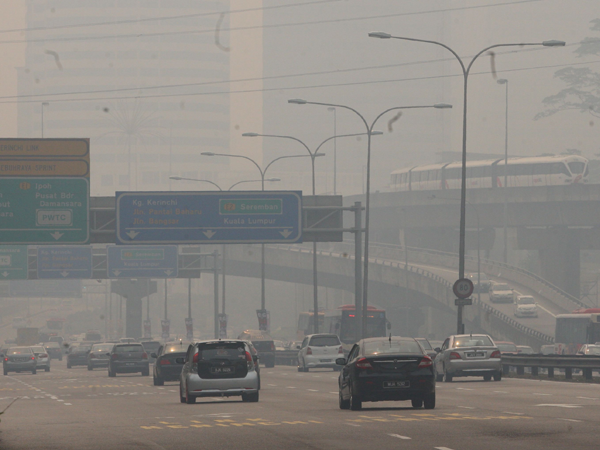
SINGAPORE— Singapore woke up to clear blue skies on Monday thanks to favorable winds but Malaysia was still being suffocated by smog from forest fires in Indonesia, where cloud-seeding flights have produced little rain.
Officials in Singapore, which bore the brunt of the smog last week, warned against complacency, saying the situation could deteriorate again if monsoon winds carrying smoke and particulates from Indonesia’s Sumatra island changed direction.
Much of Malaysia continued to wheeze under a shroud of smoke with its southern half hit particularly hard. In the capital Kuala Lumpur, the pollution index neared the “very unhealthy” 200 level for the first time during the current outbreak.
Attempts by Indonesia to induce rain over the fires has had little success.
“So far we had two sessions of cloud-seeding, one on Saturday evening and one yesterday evening. Some rain has fallen over Dumai city (in Riau province),” Indonesian disaster agency official Agus Wibowo told AFP in Jakarta.
“The cloud-seeding technology is meant to speed up rainfall, but with few clouds, there’s little we can do. The rain was more like a drizzle.”
In Malaysia, schools in Kuala Lumpur and several states were ordered closed and authorities advised parents to keep children indoors or make them wear face masks outside.
In one district in southern Malaysia close to Singapore a state of emergency was declared after the Air Pollutant Index rating soared to 746 on Sunday, the country’s highest recording since the 1997-1998 haze crisis.
Pollution levels in Malaysia’s south eased Monday but generally worsened elsewhere, with the city of Port Dickson, which lies on the Malacca Strait across from Sumatra, hitting the “hazardous” 335 level.
Conditions in densely populated Singapore first began to improve from “harmful” on Saturday and the pollutant index early Monday was around 50 — within the “good” air-quality bracket.
“We must expect the haze to come back,” Singapore’s Prime Minister Lee Hsien Loong warned on his Facebook page.
“Look out for one another and help your neighbours, especially older Singaporeans and young kids.”
The elderly, ailing people, pregnant women and young children are the most vulnerable to the effects of what is referred to as “the haze” in Southeast Asia, which last suffered a major outbreak in 2006.
Environment Minister Vivian Balakrishnan said on Sunday that “the improvement in the air quality is due to a change in the direction of the low-level winds over Singapore”.
“However, we must remain prepared for further fluctuations depending on weather conditions,” he added.
Organizers of an international conference in Singapore on reducing the threat of nuclear weapons, scheduled for Tuesday and Wednesday, said the event has been postponed “due to increasingly hazardous weather conditions”.
Singapore Foreign Minister K. Shanmugam as well as former US secretary of state George P. Shultz and former US defence chief William J. Perry were among the scheduled speakers at the 18-nation meeting.
“We are disappointed that we won’t be able to host this historic gathering in Singapore this week,” said Joan Rohlfin, president of the Nuclear Threat Initiative, one of the organisers.